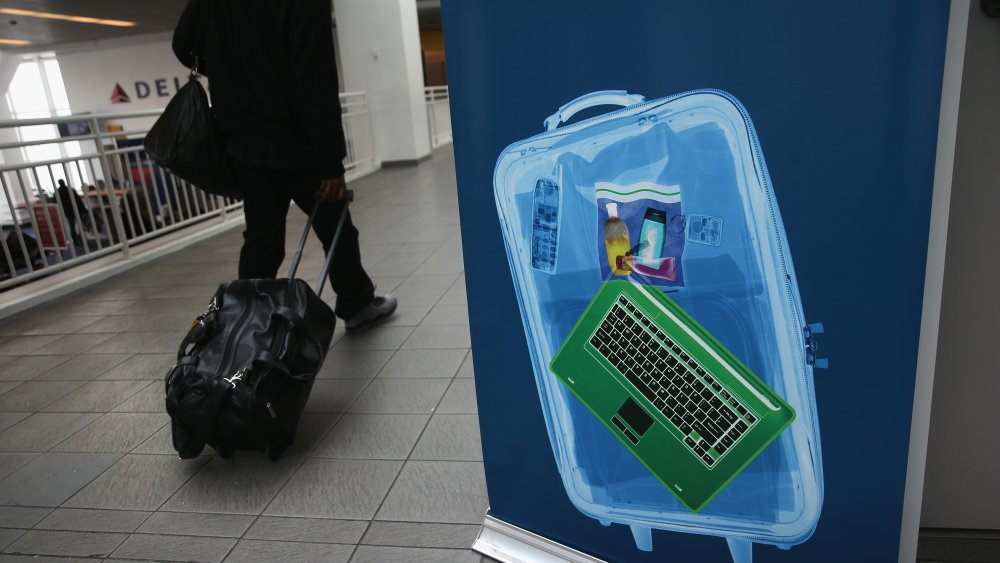This Is Why The Airport Forces You To Remove Your Laptop
If you've flown in the last twenty years or so through the use of the Bernoulli principle and not otherworldly Kryptonian might, you'll recall a number of things. You and a few hundred fellow human beings will have occupied a long line, shoeless and operating on the honor system in terms of podiatric hygiene. Your body will have been shuffled through a gauntlet of machinery designed to ensure that you don't have a crank-operated Civil War era gatling gun hidden under your gut paunch. And as you'll no doubt recollect, you will have been reminded in monotonous tones and relentless cadence that laptops must be removed from bags.
The reason behind this move shockingly predates 9/11 and the international shift towards turning airline travel into cell inspection at Folsom State. As Slate points out, security concerns about laptops, and electronics in general, go all the way back to the 1980s and a boom box that killed 270 people.
Pan Am flight 103 changed everything
On December 21st, 1988, Pan Am Flight 103 travelling from London's Heathrow Airport to JFK International in New York, exploded as it passed over Lockerbie, Scotland. History reports that 243 passengers, 16 crew, and 11 folks on the ground were killed in the incident. Investigators discovered that the explosion came courtesy of a bomb hidden in a Toshiba Bombeat boombox.
The event raised awareness in the security community of the threats posed by portable technology. Electronics, often packed with dense components, could theoretically provide an ideal hiding spot for an explosive device. Left inside of a bag, they might be layered on top of simple weapons like knives or, you know, very small blow dart guns, obfuscating them from the ever watchful eyes of airport security's x-ray machines.
Of course, Slate also points out that airport procedures regarding electronics varied from one location to another. It wasn't until the September 11 attacks that uniform policies were put into place.

